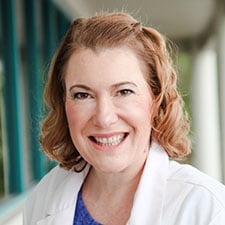As Alexus Ochoa-Dockins, a 19-year-old college athlete, was being rushed to the hospital, the responding paramedic contacted the emergency department to alert them that a patient with a suspected pulmonary embolism would be arriving shortly.
The family nurse practitioner (NP) who would see Alexus in the ED ordered an array of tests, including a chest CT scan that would have confirmed the paramedic’s suspicions. But the scan was postponed after Alexus fainted and a urinalysis showed “presumptive positive detection” for methamphetamine even though the test was negative for amphetamine.
Ten hours later, the CT scan was performed and was misread by the NP as a crushed sternum. While the diagnosis was wrong, it led to Alexus being transferred to a larger hospital where a physician correctly diagnosed her pulmonary embolism and began treatment. But it was too late, and she died two hours later.
Rebekah Bernard, MD, uses Ochoa-Dockins’ story as a thread that ties together the issues she reports on in Patients at Risk: The Rise of the Nurse Practitioner and Physician Assistant in Healthcare, the book she co-wrote with Niran Al-Agba, MD, a pediatrician in Silverdale, Washington. Their book details how care from nonphysicians is dangerously being promoted as “just as good” as that provided by doctors—despite the huge differences in education and training requirements.
“The more we dug through the case, the more we realized that everything that we were talking about of concern, seemed to happen in her case—just so many perfect examples of just so many things going wrong,” Dr. Bernard said in an interview last year with the AMA.
“The sad thing is that this is not an isolated incident, it's just an incident in which everything kind of came together to create this horrific outcome,” she added.
Fighting scope creep is a critical component of the AMA Recovery Plan for America’s Physicians. You took care of the nation. It’s time for the nation to take care of you. It’s time to rebuild. And the AMA is ready.
Patients deserve care led by physicians—the most highly educated, trained and skilled health professionals. The AMA vigorously defends the practice of medicine against scope-of-practice expansions that threaten patient safety.
Who’s behind the white coat?
The book by Drs. Bernard and Al-Agba delves into how many patients don’t know that—despite their white coat—the person in the exam room with them is not a physician.
“Unfortunately, most Americans have remained dangerously unaware of this revolution in health care,” the book says. And, “if patients do wonder about being treated by a non-physician, they are reassured that their nurse practitioner or physician assistant is ‘just as good’ as a doctor, an idea reinforced by multimillion-dollar direct-to-patient advertising campaigns.”
An Oklahoma jury awarded Alexus’ estate $6.19 million, and their attorney said that there was hope that the verdict would lead to changes to ensure that “appropriately qualified medical providers” were on hand at all the state’s hospitals.
“If only this were the case,” Dr. Bernard wrote.
It’s the third book written by Dr. Bernard, whose parents were both registered nurses. Her solo practice, Gulf Coast Direct Primary Care, is in Fort Myers, Florida, where she also serves as president of the Collier County Medical Society and president of the grassroots advocacy group Physicians for Patient Protection.
Find out why physician-led care teams are key to battling the doctor shortage.
It’s about protecting patients
Dr. Bernard said her passion for the scope-of-practice issue is “about making sure that patients have the right quality of care and making sure that we're going to have the care for ourselves because, ultimately, we're all going to be patients someday.”
Dr. Bernard is a member of the Florida Medical Association and the AMA, and research from the AMA is cited throughout her book.
She also cited a 2019 study, “Potential Crisis in Nurse Practitioner Preparation in the United States,” published in the peer-reviewed journal Policy, Politics, & Nursing Practice.
That study analyzes the American Association of Colleges of Nursing’s list of accredited doctorate of nursing practice (DNP) programs. Of the 533 DNP programs established between 2005 and 2018, researchers found, only 15% were clinical in nature, while the others focused on leadership and administration topics.
“That means 85% don't give them any additional clinical training, yet now they have doctor in front of their name,” Dr. Bernard said. “Patients don't know that it's almost more like an academic type of a doctorate than a clinical doctorate.”
The AMA’s truth-in-advertising campaign aims to ensure that all health professionals clearly and honestly state their level of training, education and licensing.
An AMA-led coalition of 108 national, state and specialty medical societies, has been active in dozens of states this year working to block legislation that would provide inappropriate expansion of the medical services and procedures nonphysician health professionals are allowed to perform.
Learn more about the AMA’s wide-ranging fight against scope creep.




